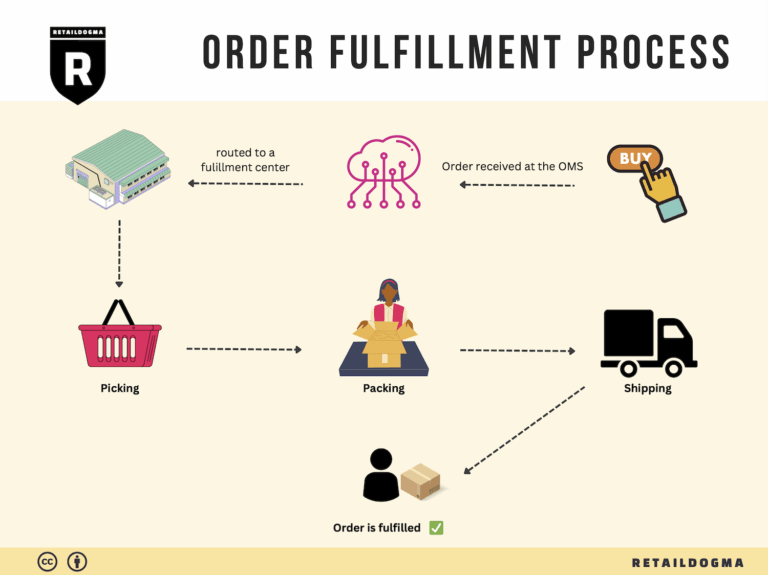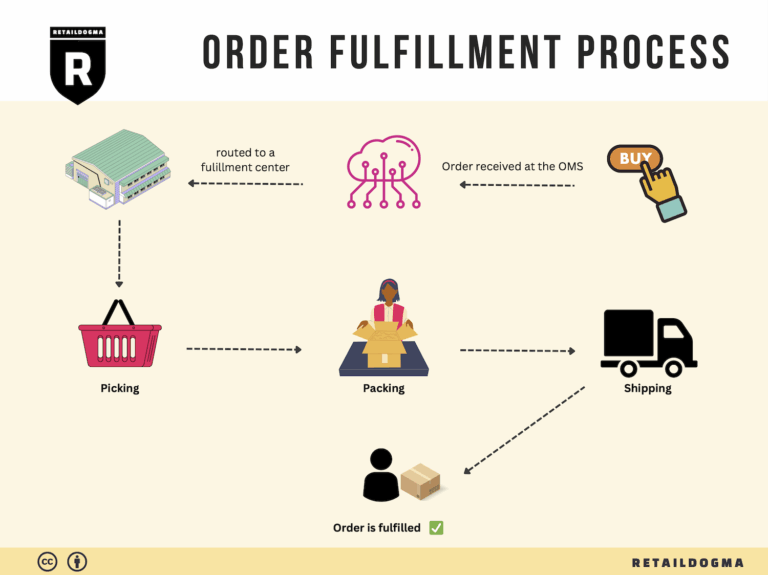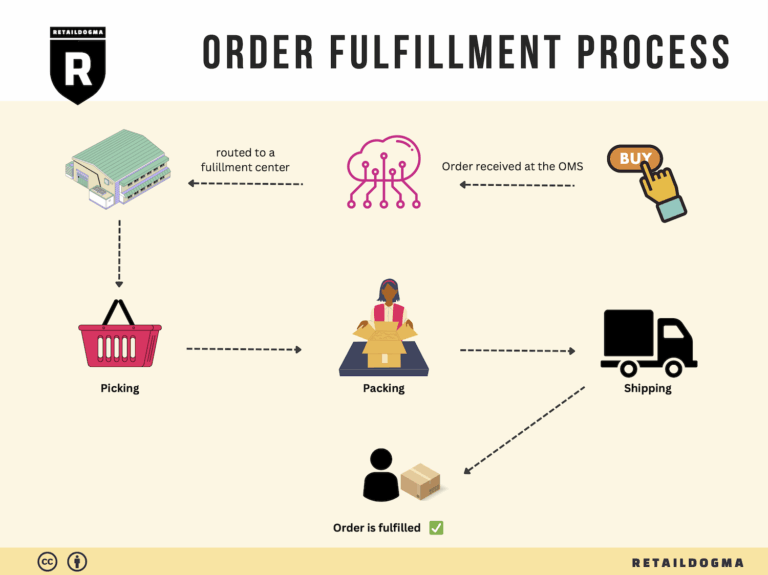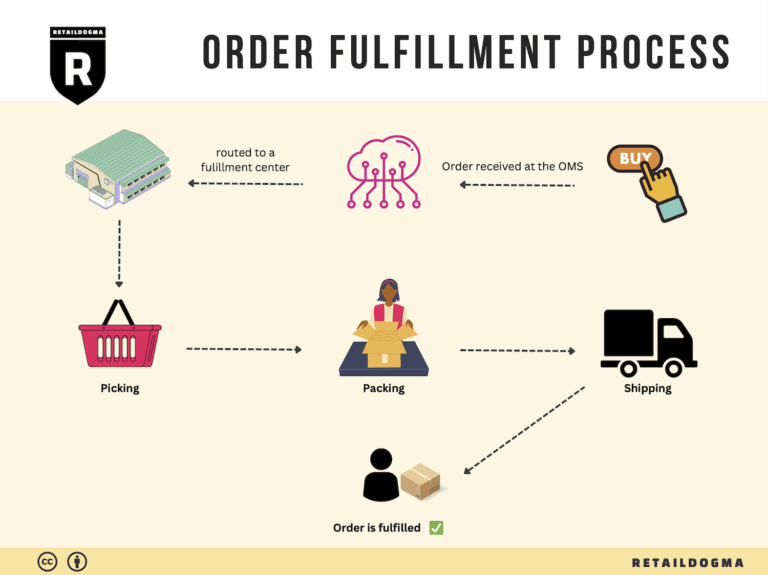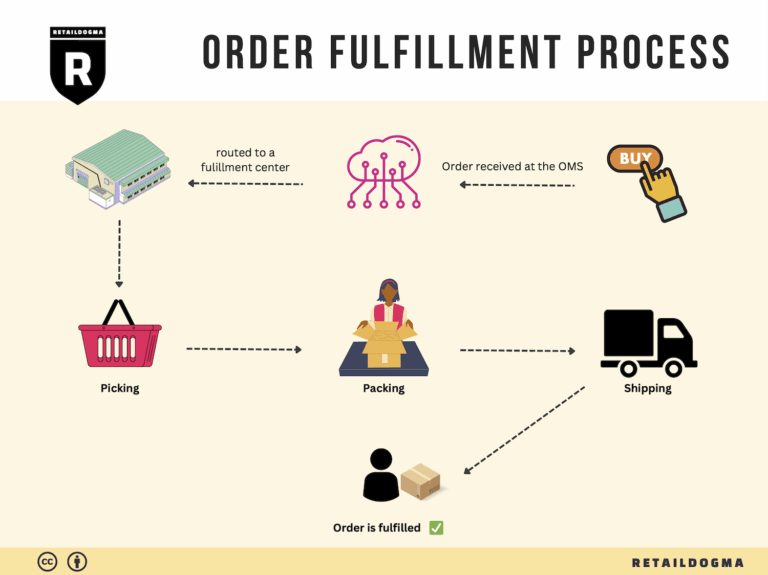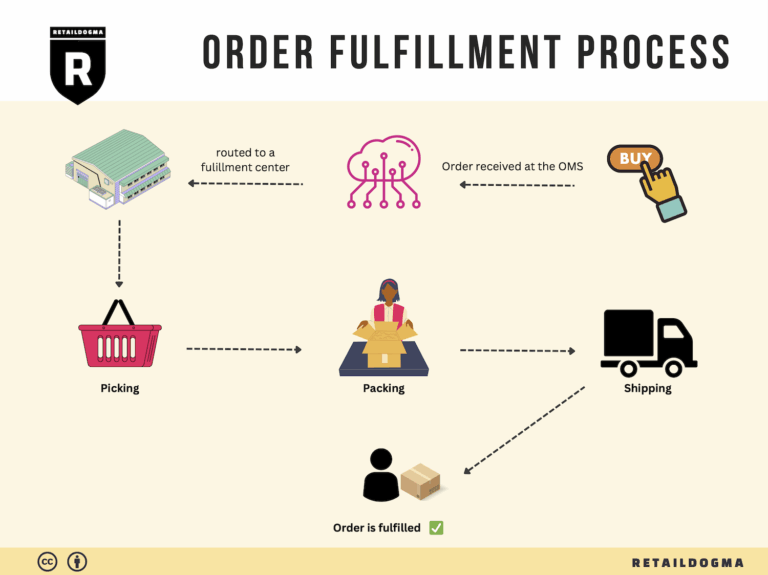How Order Fulfillment Works: A Step-by-Step Guide for Businesses
What is E-commerce Fulfillment? An Introduction for Growing Businesses
Understanding the Fulfillment Process: A Key to E-commerce Success
As a growing online business, you may find yourself grappling with the complexities of packing and shipping orders. The excitement of expanding your customer base can quickly turn into a logistical nightmare if you’re overwhelmed by the demands of fulfillment. This is where e-commerce fulfillment comes into play. At its core, fulfillment is the process of getting a product from your warehouse or supplier to your customer’s doorstep, efficiently and accurately.
For many entrepreneurs, especially those operating in the bustling e-commerce landscape, the fulfillment process can be a significant pain point. From managing inventory levels to ensuring timely shipping and handling returns, the logistics of getting products to customers can consume time and resources that could be better spent on growth strategies.
This guide aims to demystify e-commerce fulfillment and provide practical insights for businesses looking to scale their sales and logistics. We will explore various fulfillment models, including Third-Party Logistics (3PL) and Fulfillment by Amazon (FBA), highlighting the advantages and disadvantages of each. Understanding these models is crucial for selecting the right fulfillment strategy that aligns with your business needs.
In addition to models, we will delve into the core services typically offered by fulfillment partners, such as inventory management, order processing, and shipping logistics. You’ll learn how these services can streamline your operations, enhance customer satisfaction, and ultimately drive sales.
Choosing the right fulfillment partner is a critical decision for any growing business. We will discuss key factors to consider, including compliance requirements, technology integration, and the geographic reach of your potential partners. By making informed choices about your logistics, you can significantly impact your bottom line.
Pricing is another essential element we will cover. Understanding the cost structure of fulfillment services can help you budget effectively and avoid unexpected expenses. We’ll break down the various pricing models and what to expect based on your unique needs.

Our goal with this guide is to empower you to make smart, strategic decisions about your logistics operations. By understanding the ins and outs of e-commerce fulfillment, you can position your business for sustainable growth and success in an increasingly competitive marketplace.
What You’ll Learn In This Guide
- What is E-commerce Fulfillment? An Introduction for Growing Businesses
- The Order Fulfillment Process: From ‘Buy’ Button to Customer’s Door
- Comparing Fulfillment Models: In-House vs. 3PL vs. Dropshipping
- A Deep Dive into Amazon FBA: Pros, Cons, and Who It’s For
- Core Services Offered by Fulfillment Centers
- How to Choose a Fulfillment Partner: A 6-Point Checklist
- Understanding Fulfillment Pricing: A Breakdown of Common Fees
- Frequently Asked Questions (FAQs) about Fulfillment
- Conclusion: Is Outsourcing Fulfillment the Right Move for Your Business?
- Important Disclaimer
The Order Fulfillment Process: From ‘Buy’ Button to Customer’s Door
1. Receiving Inventory
The first step in the order fulfillment process is receiving inventory. When products arrive at a fulfillment center, they must be checked against purchase orders to ensure accuracy. This step typically involves recording the details of each item, including its SKU (Stock Keeping Unit), quantity, and condition.
Importance: Accurate receiving is critical because it establishes the baseline for inventory levels. If discrepancies occur at this stage, it can lead to stockouts or overstock situations, impacting customer satisfaction and overall operational efficiency.
Key Term: SKU – A unique identifier for each product, crucial for tracking inventory levels and facilitating smooth operations.
2. Warehouse Storage
Once inventory is received and verified, the next step is warehouse storage. Products are organized in a manner that maximizes space and ensures easy access. Warehouses often utilize a variety of storage methods, including pallet racking and shelving, depending on the type of goods stored.
Importance: Efficient storage solutions are vital for minimizing the time required to locate items, which directly affects order fulfillment speed. An organized warehouse reduces the risk of errors and helps maintain accurate inventory counts.

Key Term: ABC Analysis – A method of categorizing inventory based on importance and turnover rates, allowing businesses to prioritize storage and management efforts on high-impact items.
3. Order Picking
Order picking is the process of retrieving items from storage to fulfill customer orders. This step can be executed through various methods, including single order picking, batch picking, or zone picking, depending on the volume and complexity of orders.
Importance: The accuracy and speed of order picking are crucial for meeting customer expectations. A well-optimized picking process can lead to faster turnaround times and a higher rate of order accuracy, enhancing customer satisfaction and loyalty.
Key Term: Pick Lists – Documents or digital records that outline the items and quantities needed for each order, guiding warehouse staff through the picking process efficiently.
4. Order Packing
After items are picked, they move to the packing stage. Here, products are carefully packed into boxes or containers, ensuring they are protected during transit. This step often involves labeling packages with shipping information and including packing slips that detail the contents of each order.
Importance: Proper packing is essential to prevent damage during shipping and to ensure that customers receive the correct items. It also plays a role in branding; well-packaged products can enhance the customer experience and promote brand loyalty.
Key Term: Packing Slip – A document that accompanies the shipment, providing details about the order contents, which helps customers verify their purchases.
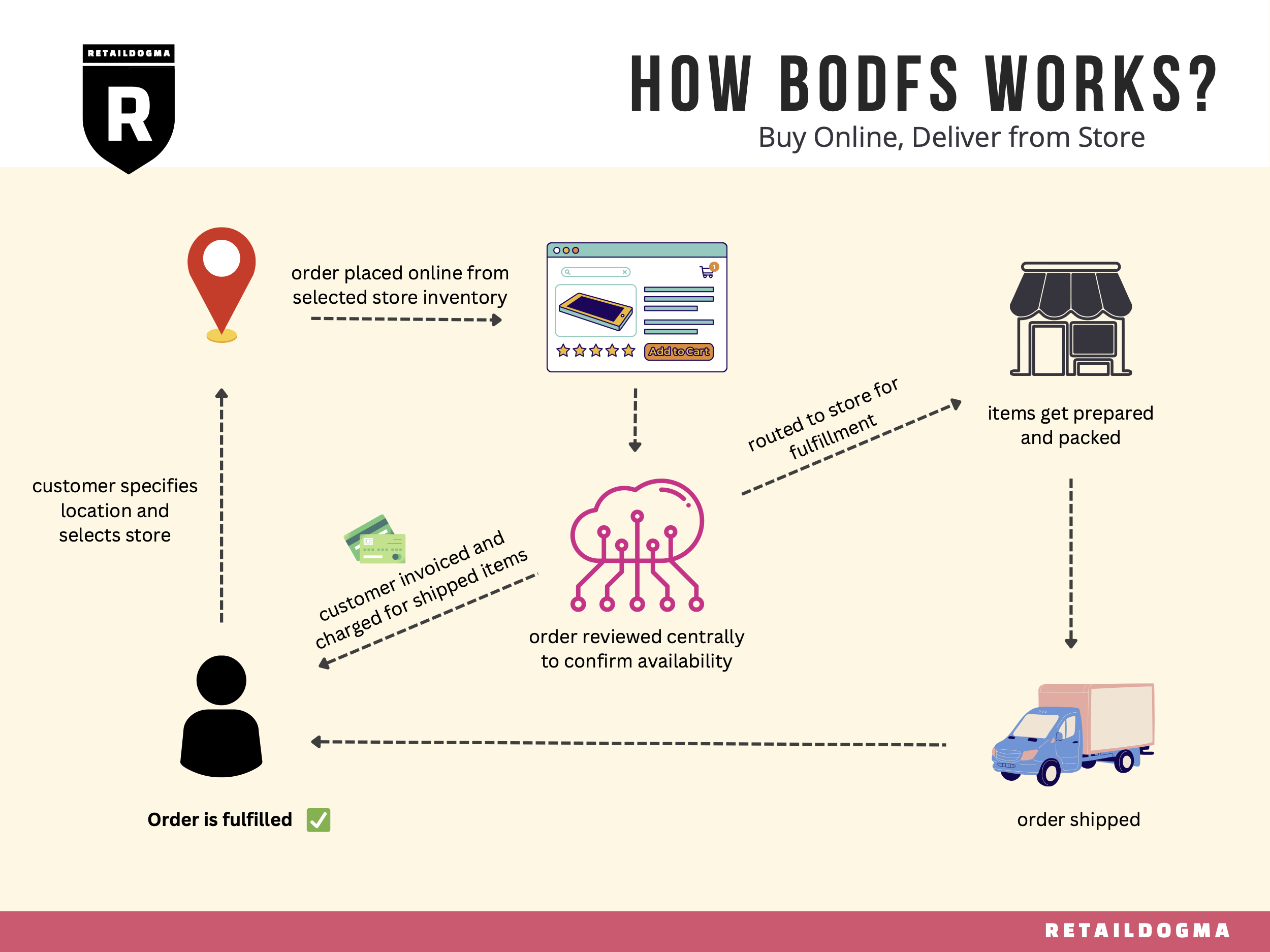
5. Shipping & Delivery
The final step in the order fulfillment process is shipping and delivery. Once packed, orders are handed over to shipping carriers for distribution. This step involves selecting the appropriate shipping method based on factors such as cost, delivery speed, and destination. Businesses may also use logistics software to track shipments and provide real-time updates to customers.
Importance: Effective shipping and delivery management can significantly impact customer satisfaction. Timely deliveries and accurate tracking information can enhance the overall shopping experience, leading to repeat business and positive reviews.
Key Term: Last-Mile Delivery – The final step in the shipping process, where the product is delivered from a distribution center to the end customer, often presenting unique challenges in terms of efficiency and cost.
By understanding and optimizing each of these five steps in the order fulfillment process, e-commerce business owners and operations managers can significantly improve their logistics efficiency, enhance customer satisfaction, and ultimately drive growth in their businesses.
Comparing Fulfillment Models: In-House vs. 3PL vs. Dropshipping
Fulfillment Model Comparison
| Model | Who Handles Inventory | Best For (Business Stage) | Key Advantage | Key Disadvantage |
|---|---|---|---|---|
| In-House Fulfillment | The business itself | Established businesses with stable sales | Complete control over inventory and fulfillment processes | Higher overhead costs and resource allocation |
| Third-Party Logistics (3PL) | A third-party provider | Growing businesses looking to scale | Access to expertise and technology without large investments | Less control over operations and potential service variability |
| Dropshipping | Supplier or manufacturer | Startups and businesses testing markets | Low startup costs and minimal risk | Lower profit margins and reliance on supplier reliability |
In-House Fulfillment
In-house fulfillment involves a business managing its inventory and logistics operations internally. This model is best suited for established businesses with a stable sales volume, as it allows for complete control over inventory management, order processing, and shipping. Companies that choose in-house fulfillment can tailor their logistics processes to meet specific customer needs and maintain direct oversight of quality and performance. For instance, having a dedicated warehouse enables businesses to implement personalized packing and shipping practices, which can enhance customer satisfaction. However, this model comes with significant disadvantages, including higher overhead costs related to staffing, warehousing, and technology investments. Additionally, managing logistics requires a dedicated team and resources, which can distract from other critical business operations, particularly for smaller companies.
Third-Party Logistics (3PL)
Third-party logistics (3PL) involves outsourcing the warehousing and distribution of products to a specialized provider. This model is particularly advantageous for growing businesses that want to scale without the burden of managing logistics themselves. By partnering with a 3PL provider, companies gain access to advanced logistics technologies, industry expertise, and established distribution networks, which can significantly enhance operational efficiency. For example, 3PLs like Red Stag Fulfillment are designed to meet specific retailer compliance requirements, such as those mandated by Costco, ensuring seamless integration into various retail channels. However, the primary disadvantage of using a 3PL is the reduced control over logistics operations. Businesses must rely on their provider’s capabilities and responsiveness, which can vary. Additionally, any issues within the 3PL’s operations can directly impact customer satisfaction and brand reputation.
Dropshipping
Dropshipping is a fulfillment model where the retailer does not hold inventory but instead relies on suppliers or manufacturers to ship products directly to customers. This model is ideal for startups or businesses testing new markets, as it requires minimal upfront investment and eliminates the risks associated with unsold inventory. With dropshipping, companies can offer a wide range of products without the need for significant warehousing costs or logistics infrastructure. However, dropshipping also comes with notable disadvantages. The profit margins are typically lower compared to other fulfillment models due to the reliance on suppliers for pricing and shipping. Additionally, businesses are at the mercy of their suppliers regarding product availability and shipping times, which can lead to delays and customer dissatisfaction. The lack of control over inventory and fulfillment processes can hinder a brand’s ability to provide a consistent customer experience.
Conclusion
When choosing a fulfillment model, e-commerce businesses must weigh their specific needs, resources, and growth ambitions. In-house fulfillment offers control and customization but requires significant investment and resources. Third-party logistics provide scalability and expertise at the cost of some control, while dropshipping presents a low-risk entry point into e-commerce but can limit profitability and reliability. Evaluating these models in light of current operational capabilities and future growth plans is crucial for making an informed decision that aligns with overall business strategy.
A Deep Dive into Amazon FBA: Pros, Cons, and Who It’s For
Understanding Fulfillment by Amazon (FBA)
Fulfillment by Amazon (FBA) is a service provided by Amazon that allows sellers to store their products in Amazon’s fulfillment centers. Amazon then takes care of storage, packaging, and shipping of these products directly to customers. This service has gained significant traction among e-commerce entrepreneurs and businesses looking to streamline their operations and leverage Amazon’s vast distribution network.
How FBA Works
-
Setting Up: Sellers create an Amazon seller account and set up FBA by selecting the products they want to fulfill through Amazon. They then ship their products to Amazon’s fulfillment centers.
-
Storage: Once received, Amazon stores the products in their warehouses. Sellers are charged for storage based on the amount of space their inventory occupies.
-
Order Fulfillment: When a customer places an order for a seller’s product, Amazon picks, packs, and ships the item on behalf of the seller. This includes handling customer service and returns.
-
Customer Experience: Products fulfilled by Amazon are eligible for Amazon Prime and are often listed with the “Fulfilled by Amazon” badge, which can enhance visibility and customer trust.
-
Payment: After the sale, Amazon deducts its fees from the sale price and transfers the remaining amount to the seller.
Pros of Using FBA
1. Prime Eligibility
Products fulfilled by Amazon are automatically eligible for Amazon Prime, which significantly increases their visibility and attractiveness to customers who are Prime members. This can lead to higher sales volumes, as Prime members tend to prefer products that offer free and fast shipping.
2. Customer Trust
Amazon is synonymous with reliability and customer service. By using FBA, sellers can leverage Amazon’s trusted brand reputation, which can enhance customer confidence and increase conversion rates. The assurance of Amazon’s customer service for returns and inquiries also adds value.
3. Multi-Channel Fulfillment
FBA can be utilized not only for sales on Amazon but also for other sales channels. Sellers can use FBA to fulfill orders from their own websites or other marketplaces, streamlining their logistics and inventory management.
4. Time Savings
By outsourcing fulfillment to Amazon, sellers can focus on other aspects of their business such as marketing and product development. FBA handles the complexities of logistics, allowing sellers to scale their operations more efficiently.
5. Scalability
FBA allows businesses to scale quickly without needing to invest heavily in their own warehousing and logistics infrastructure. Sellers can easily increase their inventory without worrying about storage or shipping logistics.
Cons of Using FBA
1. High Fees
FBA comes with various fees, including storage fees and fulfillment fees, which can add up quickly. Sellers need to carefully calculate these costs to ensure that their pricing strategy remains profitable.
2. Strict Inventory Rules
Amazon has stringent rules regarding inventory management. Sellers must adhere to guidelines concerning inventory levels, storage limits, and product condition. Failure to comply can lead to penalties or even account suspension.
3. Commingling Risks
FBA uses a commingling system where products from different sellers are stored together. This can pose risks, such as receiving returns that do not belong to the seller, which can complicate inventory management and customer service.
4. Limited Control
By using FBA, sellers relinquish some control over the fulfillment process. This includes packaging choices, shipping methods, and customer interactions. Sellers must trust Amazon to represent their brand appropriately.
5. Competition
With many sellers using FBA, competition can be fierce. Products that are identical or similar may compete for the same customer base, making it challenging to differentiate one’s offerings.
Who is FBA Best For?
FBA is an excellent option for several types of sellers:
-
Small to Medium-Sized Businesses: Those who want to scale quickly without investing heavily in logistics can benefit from the efficiencies that FBA provides.
-
E-commerce Entrepreneurs: New sellers can use FBA to quickly establish a presence on Amazon and benefit from its vast customer base.
-
Brands Seeking Nationwide Reach: Companies looking to expand their market reach without the complexities of managing their own fulfillment can leverage Amazon’s infrastructure.
-
Sellers with Bulky or Seasonal Products: Businesses dealing with large inventory or seasonal items can take advantage of FBA’s storage capabilities to manage fluctuations in demand.
-
Multi-Channel Sellers: Brands that sell on multiple platforms can streamline their operations by using FBA for fulfillment across all channels.
In conclusion, Fulfillment by Amazon offers a robust solution for businesses looking to enhance their e-commerce operations. While there are notable advantages, such as increased visibility and customer trust, it is crucial for sellers to weigh these against potential downsides like fees and inventory management challenges. By understanding the dynamics of FBA, sellers can make informed decisions that align with their operational goals and growth strategies.
Core Services Offered by Fulfillment Centers
Inventory Management & Warehousing
Inventory management and warehousing are fundamental services provided by fulfillment centers, serving as the backbone of any e-commerce operation. This service encompasses the systematic tracking of inventory levels, orders, sales, and deliveries. Fulfillment centers typically employ advanced inventory management software that integrates with e-commerce platforms, enabling real-time visibility into stock levels and helping businesses avoid stockouts or overstock situations.
Benefits:
1. Optimized Stock Levels: By maintaining accurate inventory counts, fulfillment centers help businesses ensure that they have the right amount of stock available, reducing the risk of lost sales due to stockouts while minimizing excess inventory costs.
2. Space Efficiency: Fulfillment centers utilize strategic warehousing solutions, optimizing storage space through advanced shelving and layout designs. This can significantly reduce overhead costs associated with maintaining a large warehouse.
3. Scalability: As e-commerce businesses grow, fulfillment centers can easily adapt to increased inventory demands, allowing for quick scaling without the need for businesses to invest in additional warehousing space or technology.
Pick and Pack Services
Pick and pack services are essential in the order fulfillment process, where items are selected from inventory (picked) and prepared for shipment (packed). Fulfillment centers employ sophisticated systems to streamline this process, utilizing barcode scanning and automated picking technologies to enhance accuracy and efficiency.
Benefits:
1. Speed and Efficiency: With dedicated staff and technology, fulfillment centers can process orders quickly, often shipping within 24 hours. This efficiency is crucial for meeting consumer expectations for fast delivery.
2. Accuracy: Advanced technology reduces human error during the picking process, ensuring that the right products are packed and shipped to customers. This leads to higher customer satisfaction and fewer returns.
3. Cost-Effective Operations: By outsourcing pick and pack services, e-commerce businesses can reduce labor costs associated with in-house fulfillment, allowing them to focus on core activities like marketing and product development.
Kitting and Assembly
Kitting and assembly services involve bundling multiple products into a single package or creating a product that requires assembly. This service is particularly useful for e-commerce businesses that sell items such as gift sets, subscription boxes, or products that require assembly before shipping.
Benefits:
1. Enhanced Product Offerings: By offering bundled products or assembled items, businesses can create unique value propositions, potentially increasing average order values and customer satisfaction.
2. Time Savings: Outsourcing kitting and assembly to fulfillment centers allows businesses to save time and resources, ensuring that they can focus on their primary operations rather than complex packaging tasks.
3. Improved Supply Chain Efficiency: Fulfillment centers can manage the entire process of sourcing components, assembling products, and packaging them for shipment, streamlining operations and reducing lead times.
Returns Management (Reverse Logistics)
Returns management, also known as reverse logistics, is a critical service provided by fulfillment centers, particularly for e-commerce businesses where return rates can be significant. This service involves the process of handling returned products, including receiving, inspecting, restocking, and processing refunds or exchanges.
Benefits:
1. Customer Retention: A streamlined returns process enhances customer satisfaction and loyalty. Fulfillment centers provide efficient handling of returns, allowing businesses to maintain positive relationships with customers even after a return is initiated.
2. Cost Management: By efficiently managing returns, fulfillment centers can help businesses minimize costs associated with reverse logistics, such as shipping and restocking fees. They can also assist in determining whether returned items can be resold or need to be discounted.
3. Data Insights: Fulfillment centers can provide valuable data on return trends, helping businesses identify potential issues with products or customer preferences. This information can be crucial for improving product offerings and reducing future returns.
In summary, the core services offered by fulfillment centers play a vital role in enhancing the operational efficiency of e-commerce businesses. By leveraging these services, businesses can scale their operations, improve customer satisfaction, and ultimately drive growth in a competitive market.
How to Choose a Fulfillment Partner: A 6-Point Checklist
Location & Warehouse Network
Importance: The geographic placement of your fulfillment partner’s warehouses can significantly affect shipping times and costs. Proximity to major transportation hubs and your customer base can enhance efficiency and customer satisfaction.
Questions to Ask:
– Where are your warehouses located, and how do they align with our primary customer demographics?
– Do you have regional depots or cross-docking capabilities to expedite shipments?
– How do you handle shipping to remote or less accessible areas?
Technology & Integrations
Importance: A robust technological infrastructure is crucial for streamlining operations and ensuring seamless communication between your e-commerce platform and the fulfillment partner. Integration capabilities can improve order processing, inventory management, and customer tracking.
Questions to Ask:
– What software systems do you use for inventory and order management?
– Can your systems integrate with our existing e-commerce platform (e.g., Shopify, WooCommerce)?
– Do you support EDI (Electronic Data Interchange) for real-time data exchange and reporting?
Specializations (e.g., cold storage, oversized items)
Importance: Depending on your product range, you may need a partner with specific capabilities, such as cold storage for perishable items or handling oversized products like furniture or appliances. Understanding these specializations is critical to ensuring proper handling and compliance with regulations.
Questions to Ask:
– What types of products do you specialize in fulfilling (e.g., perishables, oversized items)?
– Do you have the necessary facilities (e.g., temperature-controlled storage) to accommodate our product needs?
– How do you ensure compliance with industry standards for specialized items?
Scalability & Capacity
Importance: As your business grows, your fulfillment needs will change. A partner that can easily scale operations—whether by increasing capacity during peak seasons or adapting to new product lines—is essential for long-term success.
Questions to Ask:
– How do you handle fluctuations in order volume, especially during peak seasons?
– What is your maximum capacity for handling our products, and how quickly can you scale if our demand increases?
– Are there any restrictions or limitations on the types of products you can handle as we grow?
Pricing and Contracts
Importance: Understanding the pricing structure and contract terms is vital for maintaining profitability. Look for transparency in pricing to avoid hidden fees that could impact your bottom line.
Questions to Ask:
– What is your pricing model (e.g., per order, per item, monthly fees)?
– Are there any additional fees we should be aware of (e.g., storage fees, returns processing)?
– What are the terms of the contract, and how flexible are they if our needs change?
Customer Support & Reviews
Importance: Reliable customer support can be a game-changer in addressing issues that arise during the fulfillment process. Additionally, reviewing the partner’s reputation in the industry can provide insights into their reliability and service quality.
Questions to Ask:
– What levels of customer support do you provide (e.g., dedicated account manager, 24/7 support)?
– Can you provide references or case studies from similar businesses that have worked with you?
– How do you handle issues such as order inaccuracies, delays, or damaged goods?
When choosing a fulfillment partner, it’s essential to consider these six key areas thoroughly. Each aspect plays a critical role in the overall efficiency and effectiveness of your supply chain operations. By asking the right questions and assessing your potential partner’s capabilities, you can ensure that you select a fulfillment partner that aligns with your business goals and can support your growth effectively. Remember, the right partner can not only help streamline your logistics but also enhance your customer satisfaction, leading to increased sales and brand loyalty.
Understanding Fulfillment Pricing: A Breakdown of Common Fees
Initial Setup Fees
Initial setup fees are typically charged when you first engage with a fulfillment center. This fee covers the costs associated with onboarding your business into their system, which may include setting up your account, integrating with your e-commerce platform, and configuring your inventory management systems. The structure of this fee can vary widely among providers, often ranging from a few hundred to several thousand dollars, depending on the complexity of your needs.
When calculating setup fees, consider the following components:
– Account Setup: This may include creating your profile and configuring settings specific to your business operations.
– System Integration: Connecting your e-commerce platform (like Shopify or WooCommerce) to the fulfillment provider’s system.
– Inventory Setup: Entering your product details into their system, which can also involve barcode labeling and SKU assignment.
To minimize initial costs, it’s wise to ask potential providers about any waivers for setup fees based on volume commitments or contract lengths.
Receiving Fees
Receiving fees are charged for the process of accepting and processing your inventory into the fulfillment center. This fee typically covers the labor costs associated with unloading goods, inspecting them for quality, and inputting them into the inventory management system.
Receiving fees can be calculated in a few different ways:
– Per Pallet: A common model where a flat fee is charged for each pallet received. This fee may range from $20 to $50 per pallet.
– Per Item: Some providers charge based on the total number of individual items received, which can be beneficial if you have smaller shipments with a high number of SKUs.
– Hourly Rates: In certain cases, fulfillment centers may apply an hourly labor rate for the time taken to process the incoming goods.
To optimize receiving fees, consolidate shipments whenever possible and ensure that your inventory arrives in good condition to avoid additional inspection charges.
Storage Fees (per pallet/bin)
Storage fees are charged for holding your inventory at the fulfillment center. These fees are usually calculated on a monthly basis and can vary depending on the volume of your inventory and the storage method used (pallet or bin).
Key points to understand about storage fees include:
– Per Pallet Fees: This model charges a monthly fee for each pallet stored, which can range from $10 to $30 per pallet, depending on the provider and location.
– Per Bin Fees: For businesses with smaller items that don’t require pallet storage, fees may be charged on a per-bin basis. This can be more cost-effective for businesses with a diverse range of products.
To minimize storage costs, maintain an efficient inventory turnover and regularly analyze sales data to avoid overstocking.
Pick & Pack Fees (per item/order)
Pick & pack fees are incurred each time an order is processed. This fee covers the costs of selecting items from inventory (picking) and packaging them for shipment (packing).
The calculation of pick & pack fees can vary:
– Per Item Fee: A charge for each individual item picked and packed, often ranging from $0.50 to $2.00.
– Per Order Fee: A flat fee for processing each order, which may include a base cost plus additional charges for each item included in the order.
To reduce pick & pack fees, consider negotiating bulk rates based on anticipated order volumes or streamlining your product offerings to reduce complexity in order fulfillment.
Shipping Fees
Shipping fees cover the costs associated with transporting orders to customers. These fees can vary significantly based on factors like order weight, dimensions, destination, and chosen carrier.
Shipping fees are typically calculated as follows:
– Carrier Rates: Based on the carrier’s pricing structure (e.g., UPS, FedEx, USPS) and the specific service level (standard, expedited).
– Dimensional Weight: Some carriers charge based on the dimensional weight of packages, which can lead to higher fees for larger, lighter packages.
– Flat Rate Shipping: Some fulfillment centers offer flat-rate shipping options for certain package sizes or weights, which can simplify budgeting.
To get the best shipping rates, leverage volume discounts from carriers and consider partnering with fulfillment centers that have established relationships with shipping providers.
Tips for Getting an Accurate Quote
-
Provide Detailed Information: When requesting a quote, include specifics about your product dimensions, weights, order volumes, and shipping destinations.
-
Ask About Hidden Fees: Inquire about any additional charges that may apply, such as fees for special handling, returns, or seasonal surcharges.
-
Negotiate Terms: Don’t hesitate to negotiate pricing based on your expected volume or length of commitment. Many fulfillment centers are open to adjusting their fees to secure long-term partnerships.
-
Review Contracts Thoroughly: Before signing, ensure you fully understand the fee structure and any terms that could impact your overall costs.
By understanding these common fees and employing strategic approaches, you can optimize your fulfillment costs and enhance your e-commerce operations.
Frequently Asked Questions (FAQs) about Fulfillment
1. What is a Costco Fulfillment Center?
A Costco Fulfillment Center is a specialized facility within Costco’s logistics network designed to handle the storage, processing, and distribution of products for e-commerce orders. These centers manage both direct-to-consumer shipments and bulk orders for Costco’s retail locations, ensuring efficient delivery across the supply chain.
2. How does Costco’s fulfillment process work?
Costco’s fulfillment process typically involves receiving products at their regional depots, where items are sorted and routed to either retail warehouses or directly to consumers. The system utilizes cross-docking, minimizing storage time and optimizing shipping times. Costco Logistics, which includes fulfillment centers, handles about 85% of the company’s less-than-truckload (LTL) shipments, primarily for bulky items.
3. What’s the difference between a warehouse and a fulfillment center?
A warehouse primarily serves as a storage space for goods, while a fulfillment center focuses on the complete process of receiving, processing, and shipping orders directly to customers. Fulfillment centers are designed for quick order processing and often have advanced technology to streamline operations, whereas warehouses may not prioritize speed or customer service.
4. What is a Third-Party Logistics Provider (3PL)?
A Third-Party Logistics Provider (3PL) is a company that offers outsourced logistics services, including transportation, warehousing, and fulfillment. For e-commerce businesses, partnering with a 3PL can enhance efficiency, scale operations, and reduce costs by leveraging the provider’s expertise and infrastructure.
5. How much do fulfillment services cost?
The cost of fulfillment services varies widely depending on factors such as the volume of orders, the types of products, and the specific services required. Generally, fulfillment services may include storage fees, picking and packing fees, shipping costs, and additional charges for special handling. Businesses should request quotes from multiple providers to find the best fit for their budget and needs.
6. What are the benefits of using Costco’s fulfillment services?
Utilizing Costco’s fulfillment services can provide businesses with access to a vast distribution network, compliance with Costco’s stringent requirements, and the ability to reach a large customer base efficiently. Additionally, the integration of e-commerce logistics and retail distribution can enhance operational efficiency and reduce shipping costs.
7. How does Costco ensure compliance with fulfillment standards?
Costco maintains strict compliance standards through its routing guides, labeling requirements, and operational protocols that all suppliers and fulfillment partners must follow. This attention to detail helps ensure consistency in product handling and delivery, minimizing errors and improving customer satisfaction.
8. What types of products can be fulfilled through Costco’s centers?
Costco’s fulfillment centers handle a wide range of products, including both perishables and non-perishables. However, they are particularly well-equipped for large and bulky items, such as appliances and furniture, due to their specialized logistics and handling capabilities.
9. Can I use Costco fulfillment services for direct-to-consumer sales?
Yes, businesses can utilize Costco’s fulfillment services for direct-to-consumer (DTC) sales. Costco Logistics provides a framework for managing DTC orders alongside retail distribution, allowing businesses to efficiently serve customers while adhering to Costco’s operational guidelines.
10. How can I partner with Costco for fulfillment services?
To partner with Costco for fulfillment services, businesses typically need to meet specific vendor requirements and comply with Costco’s operational standards. It’s advisable to contact Costco’s logistics team or explore their website for more information on becoming a supplier and accessing their fulfillment network.
Conclusion: Is Outsourcing Fulfillment the Right Move for Your Business?
Key Benefits of Outsourcing Fulfillment
Outsourcing your fulfillment operations can be a transformative strategy for your e-commerce business. One of the most significant advantages is the time savings it offers. By delegating logistics to a specialized fulfillment partner, you can redirect your focus toward core business activities such as product development, marketing, and customer engagement. This shift not only boosts productivity but also enhances your capacity to innovate and respond to market demands.
Scalability is another critical benefit. As your business grows, so do your logistical needs. A reliable fulfillment partner can seamlessly scale operations to accommodate increased order volumes without the hassle of investing in additional infrastructure or workforce. This adaptability is essential for maintaining customer satisfaction, particularly during peak seasons or promotional events.
Expertise is an often-overlooked advantage of outsourcing. Fulfillment providers bring specialized knowledge and experience in managing complex logistics, compliance with regulations, and employing the latest technology. This expertise can lead to improved order accuracy, reduced shipping times, and ultimately, a better customer experience.
Choosing the Right Partner for Growth
However, the key to reaping these benefits lies in selecting the right fulfillment partner. Consider factors such as their track record with compliance, technological capabilities, and customer service. A partner that understands your specific business needs and has a proven history with companies like yours can make all the difference in your growth trajectory.
Call to Action
As you evaluate your current logistics strategy, consider conducting a thorough audit of your shipping processes. Are your fulfillment operations hindering your growth? If so, it may be time to explore outsourcing as a viable solution. Take the next step toward enhancing your operational efficiency by researching fulfillment partners that align with your business goals and can support your journey toward scaling success.
Important Disclaimer
⚠️ Important Disclaimer
The information in this guide is for educational purposes. Fulfillment services, pricing, and platform features change frequently. Always conduct your own due diligence and consult with providers directly before making business decisions.

